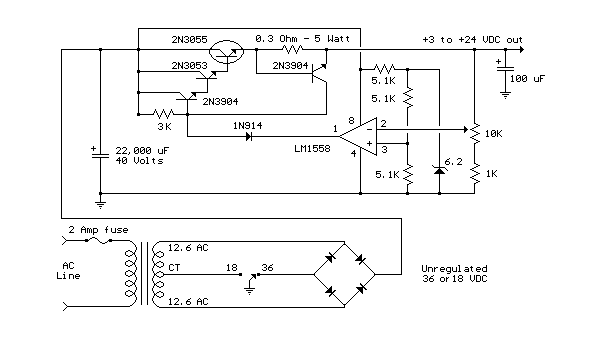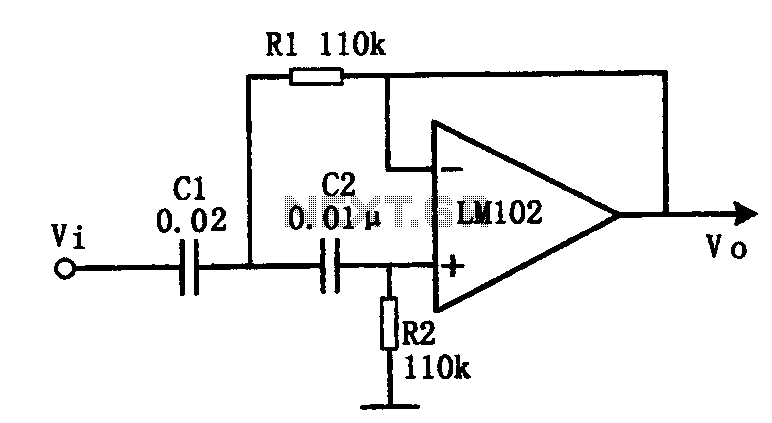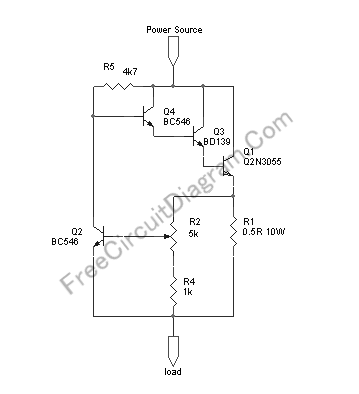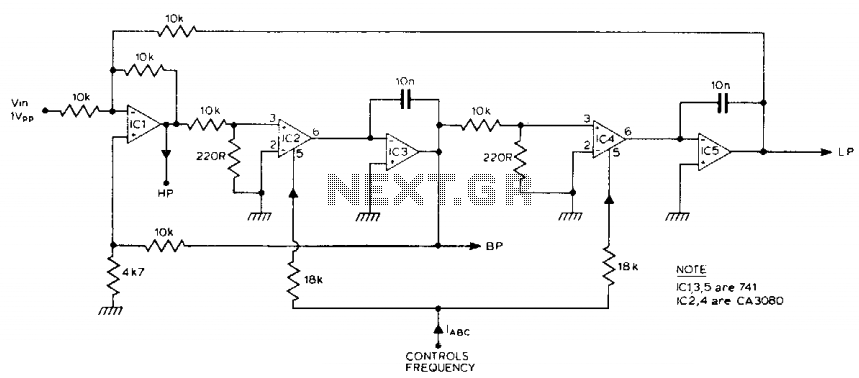
The Q value of the variable notch filter
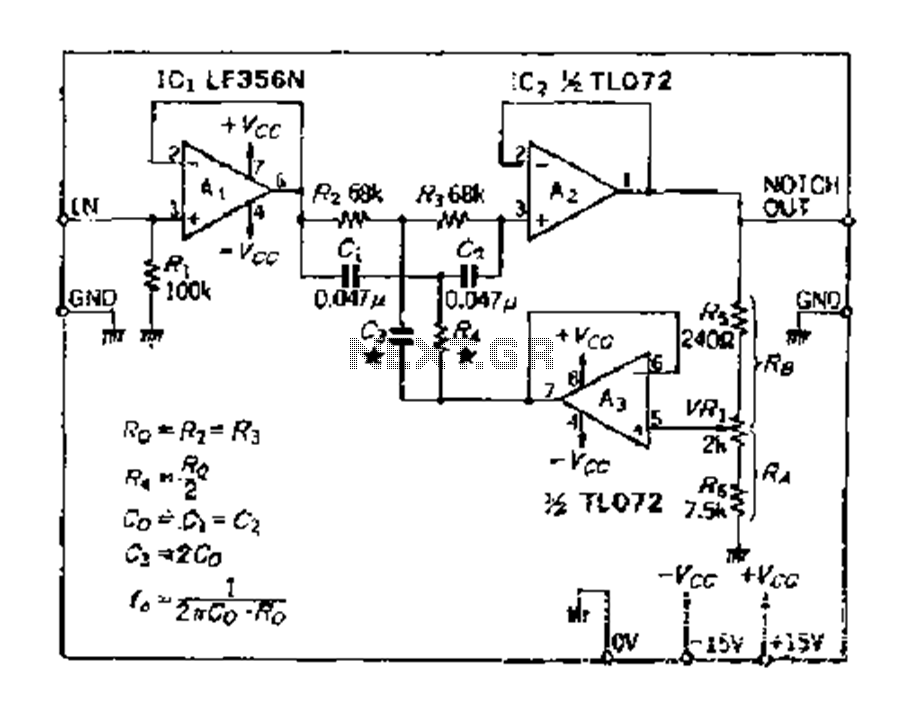
The double R circuit consists of three resistors and three capacitors, exhibiting substantially symmetrical double passive attenuation characteristics of the filter element with a frequency response range of 0 to 0.2. The parameters are determined as follows: Rz, R3, CL, C2, R = Rz/2, and various components influence the attenuation pole at resonance. Deviations from these specified conditions may lead to errors, particularly when attempting to achieve maximum attenuation.
The double R circuit is a sophisticated filter design primarily utilized for signal processing applications. It comprises three resistors and three capacitors arranged to create a symmetrical configuration that enhances its passive attenuation properties. The circuit is characterized by a frequency response that ranges from 0 to 0.2, indicating its capability to effectively filter signals within this range while minimizing distortion.
In this configuration, the resistors (Rz, R3, and R) and capacitors (CL, C2, and additional capacitive elements) play critical roles in determining the circuit's performance. The relationship R = Rz/2 is significant, as it establishes a balance that optimizes the circuit's impedance characteristics. The capacitors are equally important, as their values directly influence the cutoff frequencies and the resonance behavior of the filter.
The attenuation pole, which is a key parameter in filter design, occurs at the resonance frequency. This is where the circuit exhibits maximum attenuation, effectively reducing unwanted signals. However, it is crucial to adhere to the specified component values and configurations to achieve the desired performance. Deviations from these parameters can lead to significant errors in the filter's response, potentially compromising its effectiveness in practical applications.
Overall, the double R circuit is a valuable component in electronic design, particularly in applications requiring precise control over frequency response and signal integrity. Proper understanding and implementation of its parameters are essential for achieving optimal performance.Double r circuit consists of three resistors, three capacitors, substantially symmetrical double insanity single passive attenuation characteristics of the filter element 0 0.2 5, with a good wide frequency response characteristics. Parameters determined: Rz R3, CL C2, R Rz/2, c; ZCL,! ,. 1/2Tr Rz. Ci, the attenuation pole at the resonance. If you deviate from the above conditions, the error should be noted that the various components can not be obtained when the maximum attenuation fan, lr-iJ.
The double R circuit is a sophisticated filter design primarily utilized for signal processing applications. It comprises three resistors and three capacitors arranged to create a symmetrical configuration that enhances its passive attenuation properties. The circuit is characterized by a frequency response that ranges from 0 to 0.2, indicating its capability to effectively filter signals within this range while minimizing distortion.
In this configuration, the resistors (Rz, R3, and R) and capacitors (CL, C2, and additional capacitive elements) play critical roles in determining the circuit's performance. The relationship R = Rz/2 is significant, as it establishes a balance that optimizes the circuit's impedance characteristics. The capacitors are equally important, as their values directly influence the cutoff frequencies and the resonance behavior of the filter.
The attenuation pole, which is a key parameter in filter design, occurs at the resonance frequency. This is where the circuit exhibits maximum attenuation, effectively reducing unwanted signals. However, it is crucial to adhere to the specified component values and configurations to achieve the desired performance. Deviations from these parameters can lead to significant errors in the filter's response, potentially compromising its effectiveness in practical applications.
Overall, the double R circuit is a valuable component in electronic design, particularly in applications requiring precise control over frequency response and signal integrity. Proper understanding and implementation of its parameters are essential for achieving optimal performance.Double r circuit consists of three resistors, three capacitors, substantially symmetrical double insanity single passive attenuation characteristics of the filter element 0 0.2 5, with a good wide frequency response characteristics. Parameters determined: Rz R3, CL C2, R Rz/2, c; ZCL,! ,. 1/2Tr Rz. Ci, the attenuation pole at the resonance. If you deviate from the above conditions, the error should be noted that the various components can not be obtained when the maximum attenuation fan, lr-iJ.
